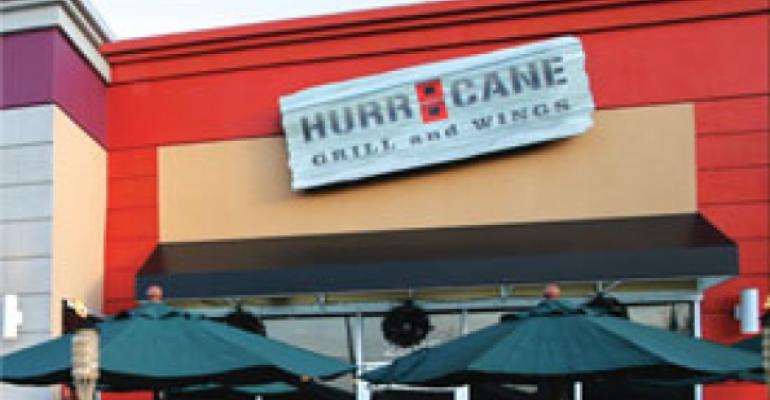Flocks of small, full-service chicken wing chains are taking flight in hopes of one day catching up to segment leader Buffalo Wild Wings, which is on course to reach 500 units by the end of the year while expecting to continue growing at a 15-percent annual rate.
Unlike the college-kid-oriented, bar-style restaurants of yore, most of today’s wing specialists offer broader menus, serve less alcohol, and are positioned to appeal to young families and couples, as well as young adult males.
But most continue the category’s sports-theme traditions, with buckets or platters of fried wings with spicy sauces.
Among the fledgling full-service chains that have been growing through franchising and have set lofty expansion targets are Wings To Go of Severna Park, Md., with 85 units; Hurricane Grill and Wings of Stuart, Fla., with 22 units; Buffalo Wings & Rings of Cincinnati, with 22 branches; Ker’s WingHouse of Largo, Fla., also with 22 units; and Wings Etc. of Ft. Wayne, Ind., with 12 units.
“What Buffalo Wild Wings did right was to start early,” said foodservice consultant Dennis Lombardi, an analyst with WD Partners, based in Columbus, Ohio. “The other ones will have to muscle in and create a unique space.”
Twenty-five years old this September, Buffalo Wild Wings long ago began to look beyond its college-sports-bar origins to target women and families with an expanded menu, including sandwiches to salads. Today’s balance skews only slightly more toward males than females, said Sally Smith, BWW’s president and chief executive.
While alcohol sales, made up mostly of beer, total 29 percent, that percentage has been steadily decreasing, and by design.
“Our guests definitely love the wings and the variety of sauces, but they also come for the experience, to hang out with family and friends,” Smith said.
With an average of 250 seats per restaurant, Buffalo Wild Wings is considerably larger than its newer competitors. Buffalo Wings & Rings and Wings To Go restaurants average 60 seats, for example, and Hurricane Grill seats between 40 and 50.
Check averages are similar for those chains that revealed them, ranging from $12 to $18 for dinner for adults, with lower prices on children’s menus.
Buffalo Wild Wings does not disclose its check averages. However, its average unit sales in 2006 were an estimated $2.2 million.
A couple of wings specialists have broken out of the sports bar-cafe mode to set themselves apart from the pack. Hurricane Grill has a tropical theme, accented with bamboo and hand-painted beach scenes. Ker’s WingHouse uses attractive, scantily clad young female servers as its main attraction.
Now 100-percent franchised, Hurricane Grill expects to open about 15 more restaurants this year and at least 50 next year through area developers, spokesman Mitch Baker said. Finding sites is not an obstacle, he claimed, because the stores are small enough to fit into strip centers or end-caps.
Ker’s, founded by former Dallas Cowboys lineman Crawford Ker, beat a legal challenge from Hooters of America nearly three years ago that alleged Ker’s had copied Hooters’ trade dress, including the waitstaff ’s wardrobe and the restaurants’ decor. Its 22 restaurants are in Florida and Texas. Chain representatives could not be reached to comment on expansion plans.
Wings To Go, which operates in 22 states, expects to hit the 100-unit mark early next year, said John Britain, vice president of operations. Though the concept began as carryout only, its restaurant models today range from full service to fast casual.
The chain’s 20 proprietary sauces are what set Wings To Go apart, Britain said. Another plus is having football legend William “The Refrigerator” Perry as a brand spokesman.
Buffalo Wings & Rings, operating in 16 states, counts strictly on local-store marketing currently, said Philip Schram, one of three partners who bought the nearly defunct chain two years ago. Founded in 1988, the chain had 26 units at is peak but had shrunk to six by 2005 before launching 16 more branches since then.
The widely dispersed locations of the chain’s units resulted from finding franchisees over the Internet, Schram said. He does not find the inability to do television advertising a disadvantage, though.
“Big TV ads have a negative effect if franchisees rely on that,” he said. “Local-store marketing is the most effective way of growing a business.”
The concept offers Greek gyro sandwiches as a secondary branded product, and the pita sandwich has become the chain’s best seller, Schram said.

